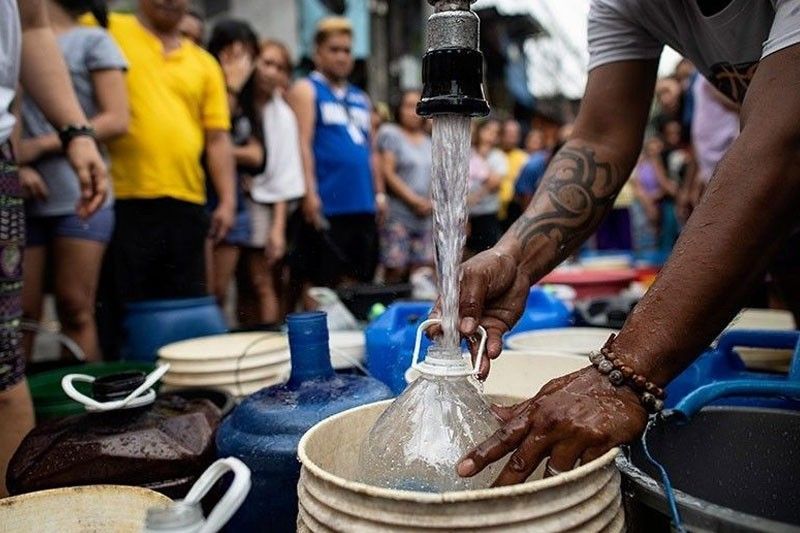Public urged: Conserve water

MANILA, Philippines — As the government braces for the El Niño phenomenon later this year, the National Water Resources Board (NWRB) is urging the public to conserve water.
Sevillo David Jr., NWRB executive director, said conserving water may help prevent a repeat of the 2019 experience in which the water level in Luzon’s Angat Dam dropped to as low as 116 meters.
“In 2019, few typhoons entered the country. As a result, we experienced the lowest level of Angat Dam of 116 meters in June, July in 2019. We want to prevent this from happening again,” David said yesterday in a radio interview.
He added that agencies like the Metropolitan Waterworks and Sewerage System (MWSS) and the National Irrigation Administration (NIA) were already tasked to find other sources of water to minimize the impact of El Niño.
“It is better that this early, we manage and conserve our water supply (so that) in case the El Niño phenomenon will affect us, we are prepared and there is enough water to supply the needs of our people,” David also said.
As of 6 a.m. yesterday, the level of the Angat Dam was at 204.3 meters, slightly lower than Thursday’s 204.63 meters.
David noted that while 204 meters is higher than the 180-meter minimum operating level of the dam, the government and the people still need to make the necessary preparations, considering that the Philippine Atmospheric, Geophysical and Astronomical Services Administration (PAGASA) already warned that El Niño might be experienced in the country starting in June or July.
Angat Dam supplies more than 90 percent of Metro Manila’s potable water needs and provides for the irrigation needs of 25,000 hectares of farmlands in Bulacan and Pampanga.
“As of now, the MWSS and NIA are implementing the necessary mitigating measures and contingency plans like deep wells and other sources of water, aside from the Angat Dam, including the Laguna Lake,” David said. He added that compared to 2019, the country is more prepared for El Niño this year.
“We have developed the Cardona Treatment Plant, it will help minimize the impact of El Niño. We also have the Putatan Water Treatment. These will help augment our water requirement,” he pointed out.
According to David, cloud seeding operations will be the last option of the government to increase the water level of Angat Dam.
“We are coordinating with PAGASA and MWSS in the cloud seeding operation. Farmers can also help by conserving water to ensure that the level of Angat Dam will not reach its critical level,” he said.
Meanwhile, a Philippine Statistics Authority (PSA) survey showed that almost all Filipino families in the country had access to improved source of drinking water last year.
In its 2022 Annual Poverty Indicators Survey (APIS), it appeared that 97.6 percent of families in the country had an improved source of drinking water last year, up slightly from 97.5 percent in 2020.
The PSA said more than half or 54.3 percent of these households sourced their drinking water from refilling stations. Piped water into dwellings was another common source of drinking water at 17.2 percent.
Of the families covered by the survey, 93.2 percent reported there was always sufficient drinking water while 4.9 percent said they experienced not having enough supply at least once as it was not available from source.
The PSA said 84 percent of families did not treat the water to ensure it is safe to drink.
Among the different regions, the National Capital Region (NCR) and Central Luzon had the highest percentage of families with access to basic service level of drinking water with 99.3 percent each.
The Cagayan Valley and Ilocos regions came in next with 99.1 percent each.
Those with the least access to basic service level of drinking water were the Bangsamoro Autonomous Region in Muslim Mindanao (BARMM) at 87.8 percent, Bicol region at 90.1 percent and Zamboanga peninsula at 90.2 percent.
When it comes to sanitation, the PSA said about 84 percent of the families had basic sanitation service level or used an improved sanitation facility that is not shared with another household last year, up from 80.4 percent in 2020.
Those which had a limited service level or used an improved sanitation facility shared with two or more households was at 10.2 percent.
Families, which had an unimproved service level or use of pit latrines, without a slab or platform, were at 2.7 percent, while 2.6 percent had no sanitation facility.
Regions with the highest percentage of families with basic service sanitation facilities were Central Luzon (92.5 percent), Calabarzon (90.4 percent) and Cagayan Valley (89.8 percent). Those with the lowest percentage of families with basic service sanitation facilities were BARMM (51.6 percent), Soccsksargen (73.8 percent) and Central Visayas (76.3 percent).
The PSA said 92.2 percent of families had a handwashing facility last year, up from 90.6 percent in 2020.
It said 70.4 percent of families have a fixed facility with sink or tap in the dwelling last year, while 11.2 percent used a fixed facility with sink or tap in the yard and 10.6 percent used a mobile object like a bucket or jug or kettle.
Calabarzon and Western Visayas had the highest percentage of families with access to basic service handwashing facilities at 97.7 percent each, followed by Central Luzon at 96.1 percent.
On the other hand, regions with the lowest percentage of families with basic handwashing facilities were BARMM (75.7 percent), Eastern Visayas (81.2 percent) and Soccsksargen (81.4 percent) – Louella Desiderio
- Latest
- Trending




























